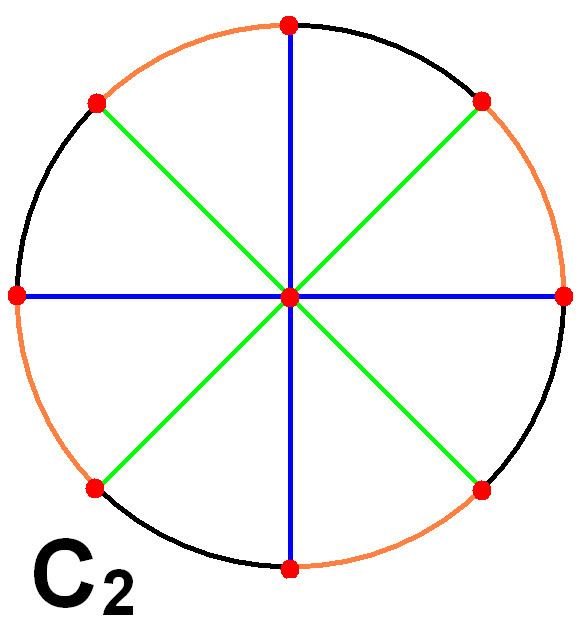 | ||
In mathematics, a hyperoctahedral group is an important type of group that can be realized as the group of symmetries of a hypercube or of a cross-polytope. It was named by Alfred Young in 1930. Groups of this type are identified by a parameter n, the dimension of the hypercube.
Contents
As a Coxeter group it is of type Bn = Cn, and as a Weyl group it is associated to the orthogonal groups in odd dimensions. As a wreath product it is
In three dimensions, the hyperoctahedral group is known as O×S2 where O≅S4 is the octahedral group, and S2 is a symmetric group (equivalently, cyclic group) of order 2. Geometric figures in three dimensions with this symmetry group are said to have octahedral symmetry, named after the regular octahedron, or 3-orthoplex. In 4-dimensions it is called a hexadecachoric symmetry, after the regular 16-cell, or 4-orthoplex. In two dimensions, the hyperoctahedral group structure is the abstract dihedral group of order eight, describing the symmetry of a square, or 2-orthoplex.
By dimension
Hyperoctahedral groups can be named as Bn, a bracket notation, or as a Coxeter group graph:
Subgroups
There is a notable index two subgroup, corresponding to the Coxeter group Dn and the symmetries of the demihypercube. Viewed as a wreath product, there are two natural maps from the hyperoctahedral group to the cyclic group of order 2: one map coming from "multiply the signs of all the elements" (in the n copies of
The kernels of these three maps are all three index two subgroups of the hyperoctahedral group, as discussed in H1: Abelianization below, and their intersection is the derived subgroup, of index 4 (quotient the Klein 4-group), which corresponds to the rotational symmetries of the demihypercube.
In the other direction, the center is the subgroup of scalar matrices, {±1}; geometrically, quotienting out by this corresponds to passing to the projective orthogonal group.
In dimension 2 these groups completely describe the hyperoctahedral group, which is the dihedral group Dih4 of order 8, and is an extension 2.V (of the 4-group by a cyclic group of order 2). In general, passing to the subquotient (derived subgroup, mod center) is the symmetry group of the projective demihypercube.
The hyperoctahedral subgroup, Dn by dimension:
The chiral hyper-octahedral symmetry, is the direct subgroup, index 2 of hyper-octahedral symmetry.
Another notable index 2 subgroup can be called hyper-pyritohedral symmetry, by dimension: These groups have n orthogonal mirrors in n-dimensions.
Homology
The group homology of the hyperoctahedral group is similar to that of the symmetric group, and exhibits stabilization, in the sense of stable homotopy theory.
H1: abelianization
The first homology group, which agrees with the abelianization, stabilizes at the Klein four-group, and is given by:
This is easily seen directly: the
H2: Schur multipliers
The second homology groups, known classically as the Schur multipliers, were computed in (Ihara & Yokonuma 1965).
They are:
